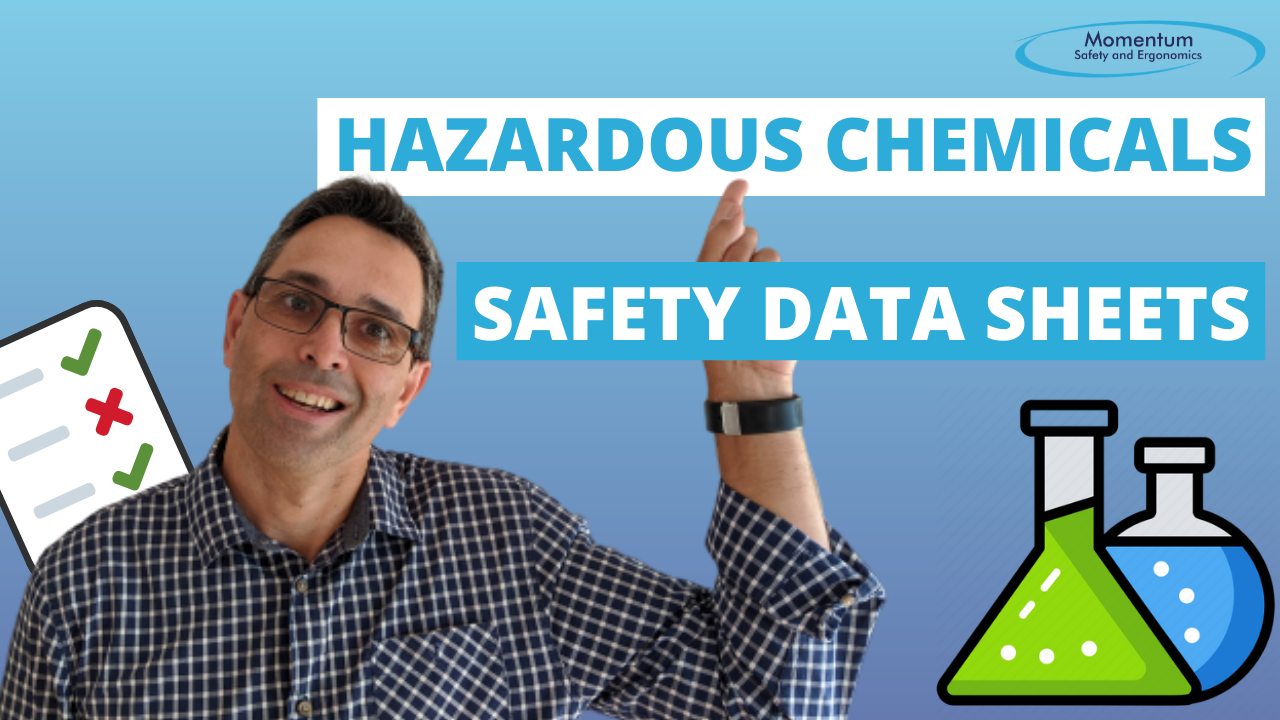In this blog you will learn about how to manage the safety involved with working in confined spaces in your workplace.
This is presented by Michael Terry of Momentum Safety.
Michael discusses what you need to know about confined space WHS in your office, your factory, your workshop or anywhere in your workplace.
Video Transcription
What is a Confined Space?
It’s important that you understand that when you’re talking about confined spaces, you understand what a confined space is.
It’s got a very specific definition according to the Work Health and Safety legislation.
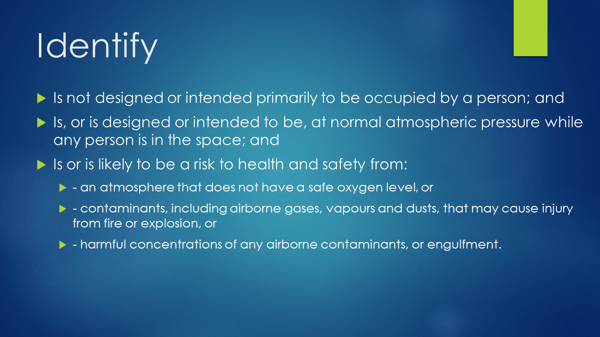
It’s got to have three key things:
- It’s not a place where a person normally works or occupies.
- It’s at an atmospheric pressure or normal atmospheric pressure. So it's not pressurised or depressurised.
- There has to be risk based on the air that you could be breathing.
- It could have low oxygen or high oxygen.
- It could have contaminants that may cause injury
- It could have harmful concentrations of contaminants.
Types of Hazards in a Confined Space
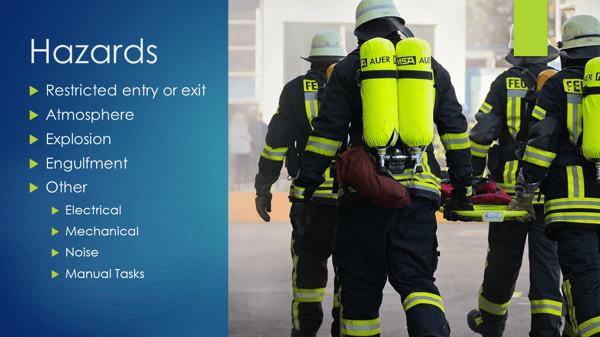
- Restricted entry and exits. Hard for people to get in and out of.
- Atmosphere. If the atmosphere is unsafe, there is potential for breathing in harmful gases. This may cause people to potentially pass out in a confined space.
- Explosions.
- Engulfment. This is where either water or grain in a silo could bury a person.
- Other hazards:
- Noise
- Manual tasks
- Mechanical hazards
- Electrical hazards
Risk Assessment
Once you’ve identified something as a confined space, you need to do your risk assessment on that space.
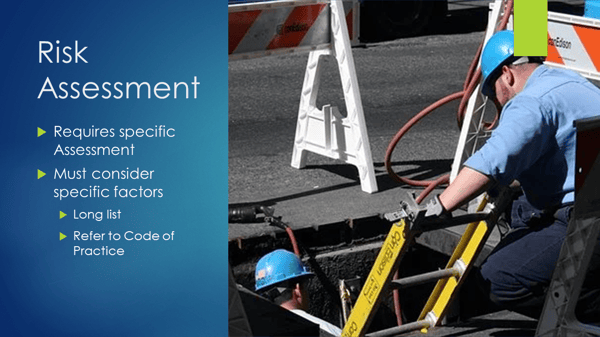
There is a particular set of factors that you have to look into when your risk assessing a confined space.
It’s a really long list.
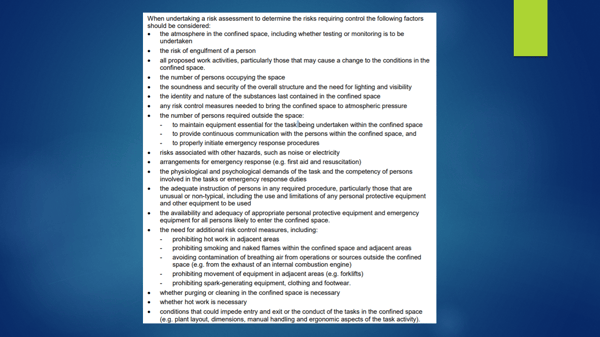
The list of factors is detailed above.
This is in the Australian WHS Code of Practice for confined spaces.
I suggest that you use a specific risk assessment template that’s designed to be used for confined spaces not just your standard risk assessment form.
Specific Controls
Once you’ve done your risk assessment, you need to think about how you can control that confined space.
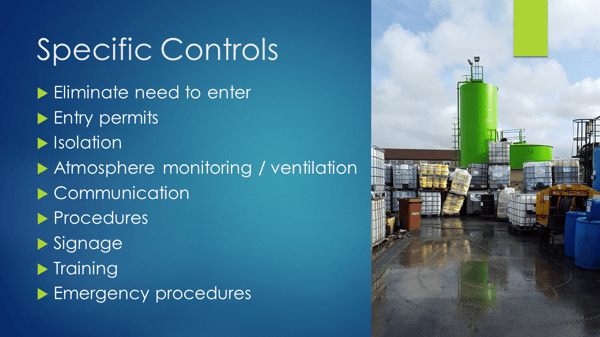
Elimination
According to the hierarchy of controls, it’s important that you consider "do we actually need to go into the confined space?"
Therefore elimination would obviously be your best option.
Entry Permits
Once you do decide that you need to enter that confined space, you should put in place entry permits.
This is a set of task that needs to be completed and signed off on before a person is allowed to enter a confined space.
By using an entry permit, you really are controlling who goes in there and what sort of controls they’ve got in place before they do.
Isolate
You need to isolate any energy sources.
Monitoring/Ventilation
You should think about what the atmosphere the person is entering.
This might be through testing. Or it could be some sort of ventilation.
Communication
You need to have good communication procedures. Therefore, a person on the outside can communicate and make sure that the person on the inside is OK.
Procedures
You need to think about things like signage, appropriate training and emergency procedures should something go wrong, so, how are we going to get people out? Oftentimes this is going to involve using things like tripods and davit systems to actually lift a person out so they have to be attached to a harness.
That’s a very quick summary of confined space management.
It’s the sort of things you need to be thinking about.
There’s a lot more in this topic and here is a link to the code of practice.
Takeaways
- Identify if it is a confined space.
- Control entry.
- Risk assess.
- If you need to enter, ensure the best possible controls.
.png?width=200&height=51&name=image%20(2).png)


